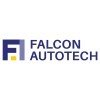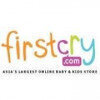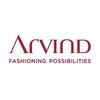Senior Executive Design
Senior Executive Design Interview Questions and Answers
Asked in Electromech Infraprojects

Q. How do you design raceways, data nodes, cable tray sizes, cable sizes, DB schedules, panel GA drawings, and lighting and power layouts?
Designing raceway, data nodes, cable tray sizes, cable size, db schedule, panel ga dwgs, ltg & power layout.
Understand the requirements and constraints of the project
Determine the appropriate cable tray size and cable size based on the number of cables and their weight
Create a detailed db schedule and panel ga dwgs to ensure proper distribution of power
Design the ltg and power layout to optimize energy efficiency
Ensure compliance with relevant codes and standards
Consider futu...read more

Asked in Tynor Orthotics

Q. What types of materials can be used to design an SPM?
Various materials such as metals, plastics, ceramics, and composites can be used to design a SPM.
Metals like steel and aluminum are commonly used for strength and durability
Plastics like ABS and PVC are used for their lightweight and corrosion resistance
Ceramics like alumina and zirconia are used for their high temperature resistance
Composites like carbon fiber and fiberglass offer a combination of strength and light weight
Asked in Electromech Infraprojects

Q. What do you know about electrical design?
Electrical design involves creating and implementing electrical systems for various applications.
Understanding electrical codes and regulations
Designing electrical systems for buildings, machinery, and equipment
Selecting appropriate components and materials
Creating schematics and blueprints
Collaborating with other engineers and professionals
Ensuring safety and efficiency of electrical systems
Troubleshooting and repairing electrical issues
Staying up-to-date with new technologi...read more

Asked in Tynor Orthotics

Q. What are the criteria for selecting motors?
Motors selection criteria involve factors like power requirements, speed, torque, size, efficiency, and cost.
Consider power requirements for the specific application
Determine the required speed and torque for the motor
Take into account the size constraints of the motor
Evaluate the efficiency of the motor to minimize energy loss
Compare costs of different motor options

Asked in Falcon Autotech

Q. types of bearings.
Bearings are components that allow for smooth rotation or movement between two parts.
Types of bearings include ball bearings, roller bearings, plain bearings, and fluid bearings.
Ball bearings use balls to reduce friction between two surfaces.
Roller bearings use cylindrical rollers to support radial and axial loads.
Plain bearings have a sliding surface instead of balls or rollers.
Fluid bearings use a thin layer of liquid or gas to support the moving parts.
Asked in Accelus Robotics

Q. Types of motors.
Types of motors include DC motors, AC motors, stepper motors, and servo motors.
DC motors: Direct current motors that convert electrical energy into mechanical energy.
AC motors: Alternating current motors that use alternating current to produce rotational motion.
Stepper motors: Motors that move in precise increments or steps.
Servo motors: Motors that use feedback to control the position and speed of the motor.
Senior Executive Design Jobs


Asked in Tata Advanced Systems

Q. Tool test for catia
A tool test for CATIA software.
CATIA is a computer-aided design (CAD) software used in various industries.
The tool test may involve assessing the candidate's proficiency in using CATIA's features and functions.
Examples of tool test tasks could include creating 3D models, performing simulations, or generating engineering drawings.
The test may also evaluate the candidate's ability to troubleshoot and solve design-related problems using CATIA.
Familiarity with CATIA's user interf...read more
Interview Experiences of Popular Companies








Reviews
Interviews
Salaries
Users

















